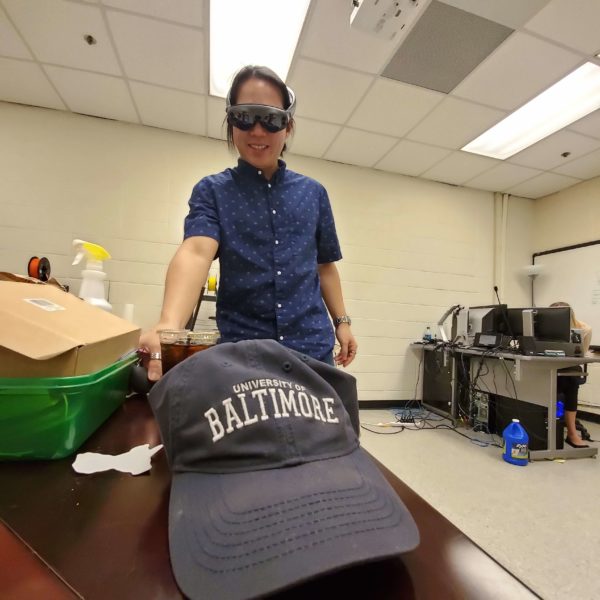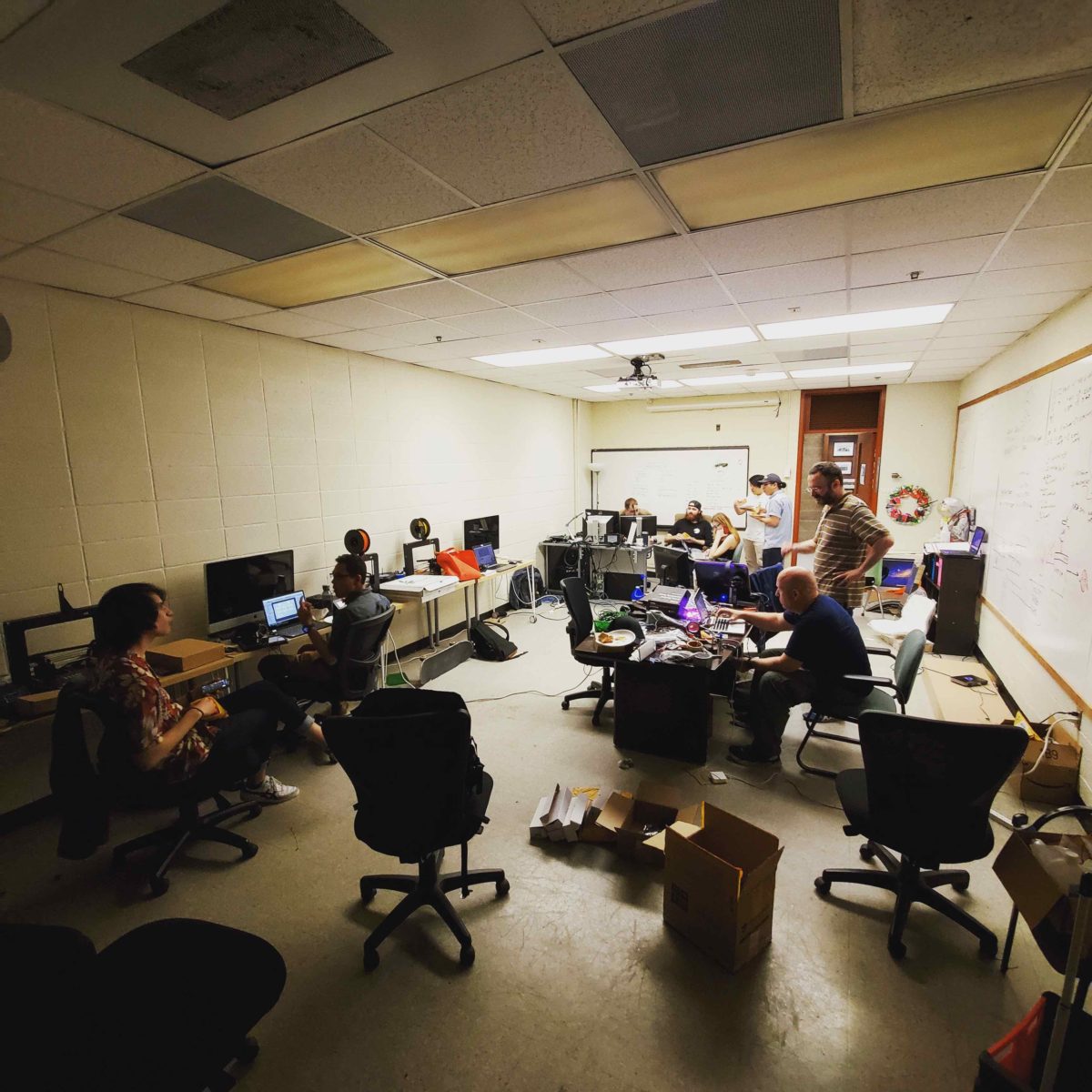Inside University of Baltimore’s Digital Whimsy Lab, a team of seven undergraduate students have been working on augmented reality. The ideal destination: space.
The PoeGrammers, so named as a tribute to the author’s statue in the midtown university’s quad where they often gather, are taking part in the NASA SUITS Design Challenge (that’s Spacesuit User Interface Technologies for Students). Their task for the past several months has been to create displays for space suits that can overlay astronauts’ field of vision during a spacewalk with an overall goal of improving communication.
“The idea is to create a UI and software for augmented reality that assists you to fulfill a task,” said Juan Pablo Soto, the project manager on the effort.
The system is designed to act as a guide for someone who hasn’t necessarily been trained for the task in front of them. The scenario the team initially built for is a medic who must replace a solar panel when an engineer isn’t available.
The interface the PoeGrammers created provides data that astronauts would need such as telemetry and oxygen, as well as alerts. Built using Magic Leap, it’s loaded with 3D models for the system and the ability to provide voice assistance to guide through the task. It also has offline support in case communication is lost.
This weekend, they’ll get another challenge directly from NASA: The team is one of 12 from universities around the country traveling to Johnson Space Center in Houston to take part in the test week for the NASA SUITS challenge where they will receive another spacewalk task to apply their existing guide system to.
The space agency could use the teams’ creations as it develops new advances.
“The base functionality is there,” said Karl-Heinz Gilbert-Wason, a UI designer and programmer on the team. “We just have to plug in the specific functions for the task NASA gives us.”

Team members also include William Hyland, John Manlucu, Osman Martinez, Larysa Paliashchuk and Eric Ra. They’re studying in a couple of different programs at UB, including applied information technology and simulation and game design.
“It all started with a “why not?” said Giovanni Vincenti, an associate professor in applied information technology who is among faculty members working with the group.
“Why not?” has been a refrain throughout the project — whether it was a question of whether to participate in a big NASA challenge or learn a new skill. And the schedule has been rigorous: The team found out they were going two weeks ago — later than others, they said — and had to rush to finish things in time for their deployment this weekend.
“I think in the last two weeks we’ve been here more than we have been home,” said Ra, a UI designer, 3D animator and modeler. They’ve been doing the work in addition to classes, and like many UB students, the undergrads also have jobs in addition to their studies.
Now they’ll head to a space with teams from universities such as Harvard, Virginia Tech and the University of Michigan. Many of the other teams are made up of graduate students.
“If you look at some of the schools and the students, they’re mostly master’s and Ph.D. students. This is a full group of undergraduate students from two programs. This is a unique achievement,” said Sujan Shrestha, UB’s program director for simulation and game design.
The team also gained new skills along the way, and it’s made the PoeGrammers a tight-knit group.
“I don’t know how we grew up so fast as a working team,” Soto said. “I want to continue it. I don’t want to dissolve this.”







